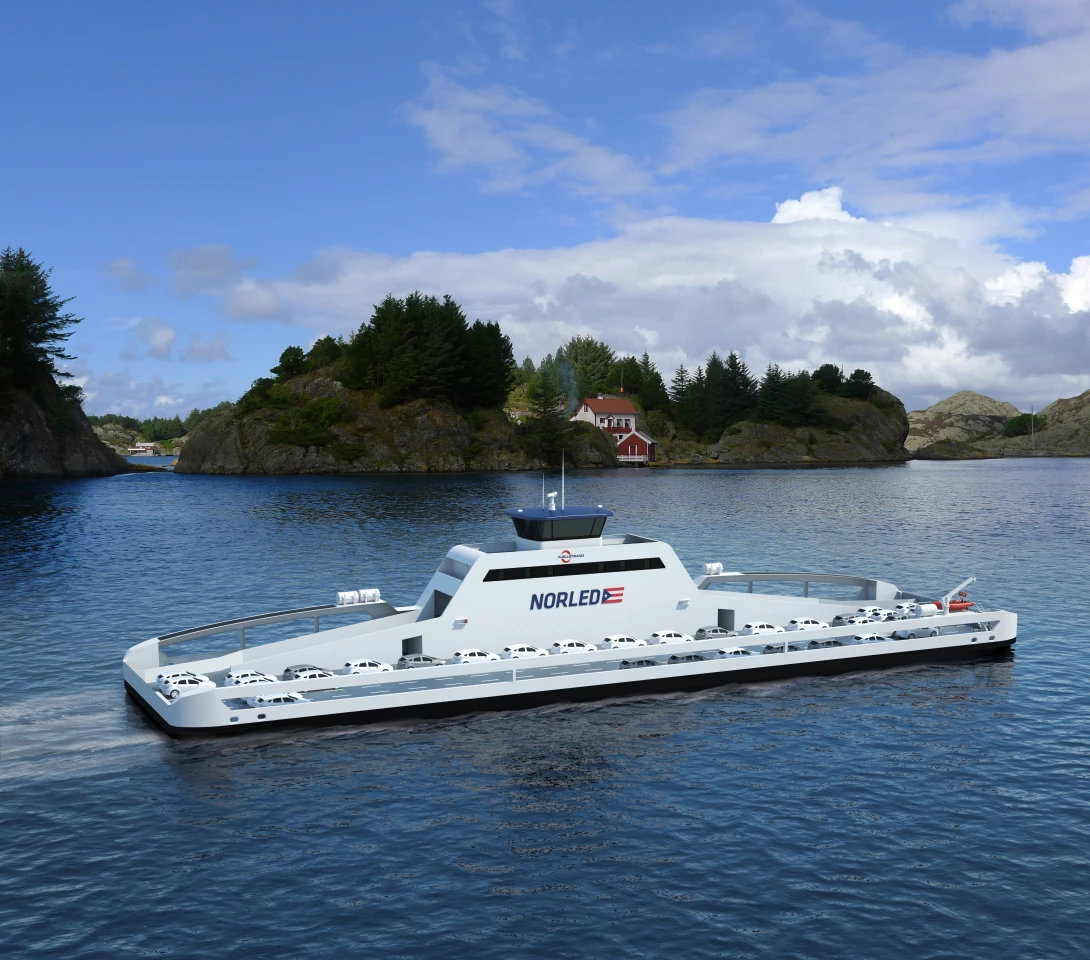Presently, the Norwegian villages of Lavik and Oppedal are linked by a ferry that burns about a million liters (264,172 US gallons) of diesel a year, emitting 570 tonnes (628 tons) of carbon dioxide and 15 tonnes (16.5 tons) of nitrogen oxides. That’s about to change, however, as it’s slated to be replaced by what is claimed to be the world’s first all-electric car-carrying ferry. Developed by Siemens and Norwegian shipyard Fjellstrand, the vessel can recharge its batteries in just ten minutes.
The 80-meter (262.5-foot) catamaran can carry 120 cars and 360 passengers across the fjord between the villages. It is powered by two 10-tonne (11-ton) electric motors, each one driving a separate propeller. Those motors have a combined maximum output of 800 kilowatts, although for the ferry’s usual cruising speed of 10 knots, an output of 400 kW should suffice.
By contrast, the diesel ferry currently in use on that route puts out 1,500 kW. Part of the reason that the electric ferry needs less oomph lies in its streamlined twin-hull design, and the fact that it weighs about half as much as an equivalent-sized conventional vessel. Those weight-savings are largely due to the use of aluminum in its hull construction, as opposed to the more traditional steel.

As noted earlier, it will be able to recharge its batteries in only ten minutes, when docked at either of the villages – it’s not clear if that figure is for recharging from an almost empty state, or simply topping up. In any case, the electrical grids of both communities won’t be able to handle such a demand all at once. Therefore, the ferry will draw upon batteries installed at each port, which will themselves be recharged slowly from the local grid.
Shipping company Norled, which initiated the electric ferry project, entered the vessel in a contest put on by Norway's Ministry of Transport. As the winner of the competition, the company has been granted a license to operate the ferry on the route from 2015 to 2025.
It has been suggested that all other Norwegian crossings of less than 30 minutes in length could also be served by electric ferries.





